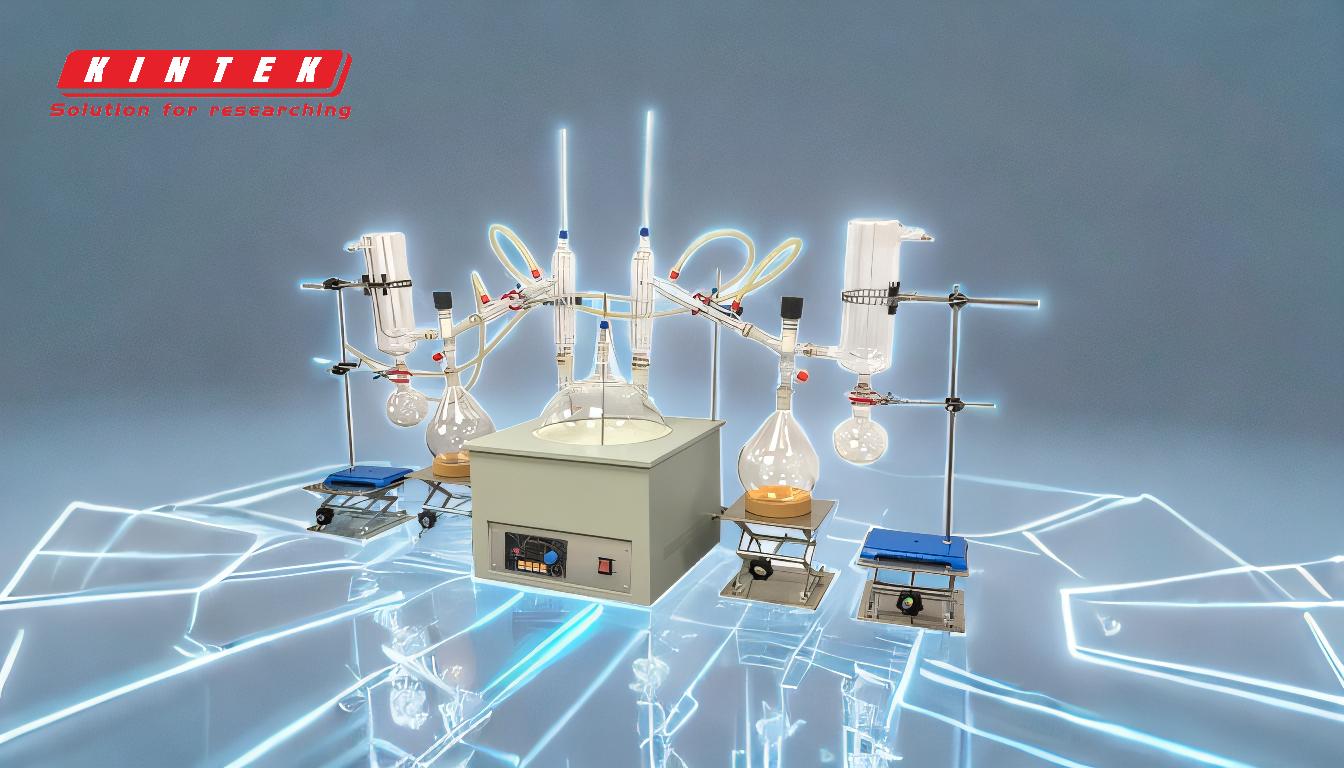Distillation is a process that separates components in a mixture based on their volatility, primarily using differences in boiling points. It involves heating a mixture to vaporize the more volatile components, which are then cooled and condensed back into liquid form for collection. This method is widely used to purify liquids or separate mixtures, and it can also be adapted for gases under specific conditions. Distillation is particularly effective for isolating volatile products, as it relies on the physical properties of the components rather than chemical reactions. The process can yield highly pure substances, depending on the setup and technique used.
Key Points Explained:

-
Definition of Distillation:
- Distillation is a physical separation process that leverages the differences in boiling points of components in a mixture.
- It is used to either increase the concentration of a specific component or isolate a pure sample from the mixture.
-
How Distillation Works:
- The mixture is heated until the more volatile component (lower boiling point) vaporizes.
- The vapor is then cooled and condensed back into liquid form, which is collected as the distillate.
- This process is repeated if necessary to achieve higher purity.
-
Volatile Product Collection:
- Distillation is specifically designed to collect volatile products, as these are the components that vaporize first during heating.
- The condensed liquid collected is the volatile product, which is often highly pure.
-
Types of Distillation:
- Simple Distillation: Used for mixtures with significantly different boiling points.
- Fractional Distillation: Used for mixtures with closer boiling points, involving multiple vaporization-condensation cycles.
- Short-Path Distillation: Ideal for heat-sensitive compounds, as it minimizes exposure to high temperatures and reduces decomposition.
-
Applications of Distillation:
- Commonly used in industries such as chemistry, pharmaceuticals, and food and beverage production.
- Examples include purifying ethanol, isolating essential oils, and producing THC distillate.
-
Factors Influencing Distillation Efficiency:
- Boiling Point Difference: Larger differences make separation easier.
- Heat Sensitivity: Heat-sensitive compounds require specialized techniques like short-path distillation.
- Equipment Setup: The size and design of the distillation apparatus affect production capacity and purity.
-
Advantages of Distillation:
- High purity of the collected product.
- Scalability for industrial applications.
- Versatility in separating a wide range of mixtures.
-
Limitations of Distillation:
- Not suitable for components with very similar boiling points.
- High energy consumption due to heating and cooling requirements.
- Potential degradation of heat-sensitive compounds if not handled properly.
In summary, distillation is an effective method for collecting volatile products by exploiting differences in boiling points. It is a versatile and widely used technique that can yield highly pure substances, making it invaluable in various scientific and industrial applications.
Summary Table:
| Key Aspect | Details |
|---|---|
| Definition | Physical separation process using boiling point differences. |
| How It Works | Heat mixture → vaporize volatile components → condense → collect distillate. |
| Types | Simple, Fractional, Short-Path Distillation. |
| Applications | Purifying ethanol, isolating essential oils, producing THC distillate. |
| Advantages | High purity, scalability, versatility. |
| Limitations | Not for similar boiling points, high energy use, heat-sensitive risks. |
Discover how distillation can enhance your processes—contact us today for expert guidance!










